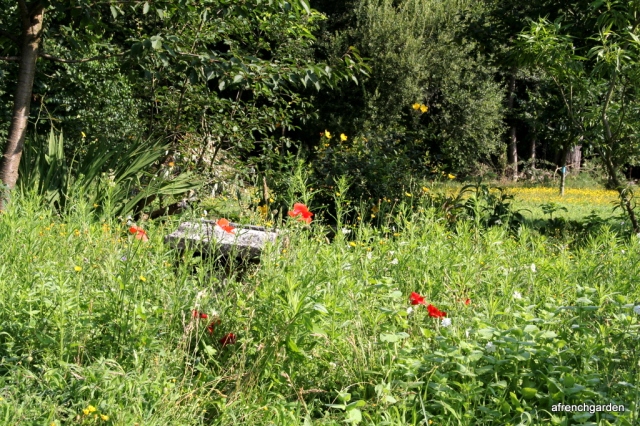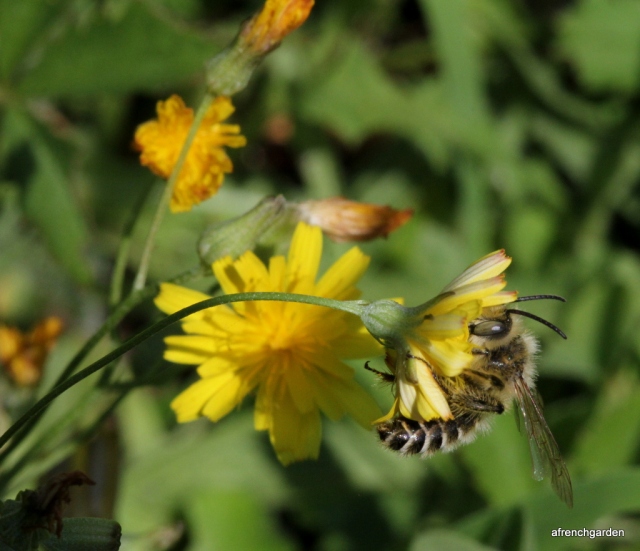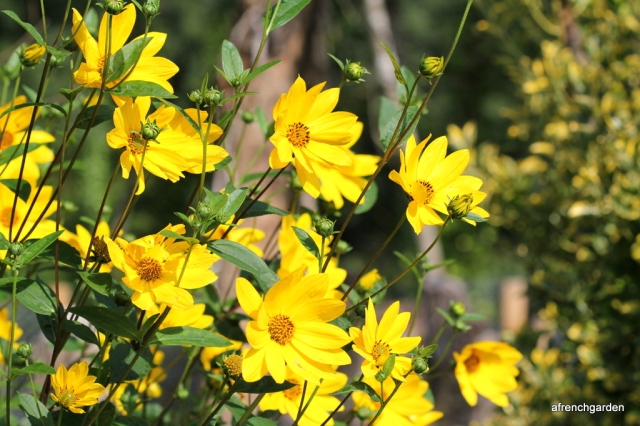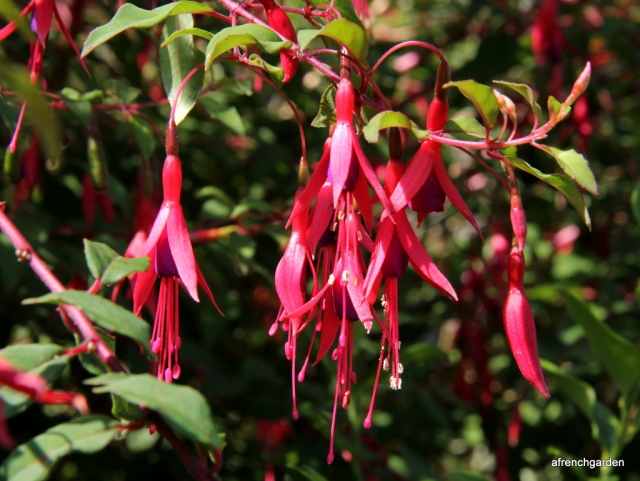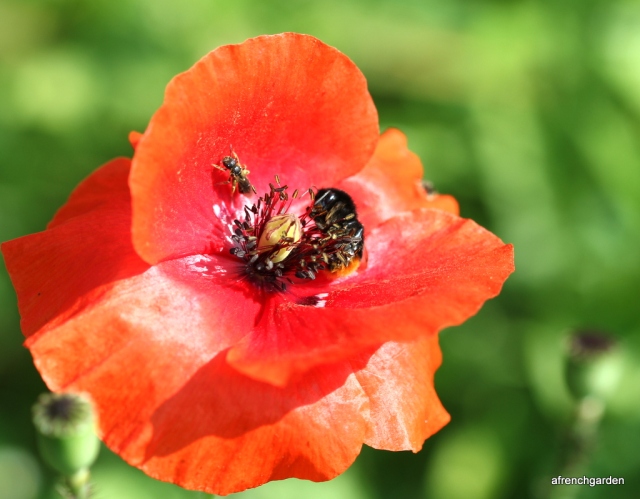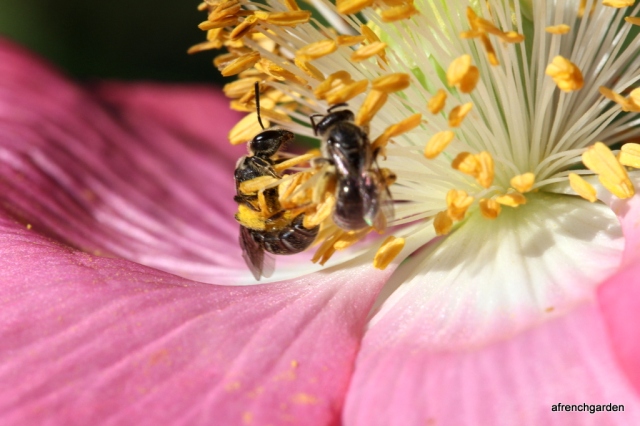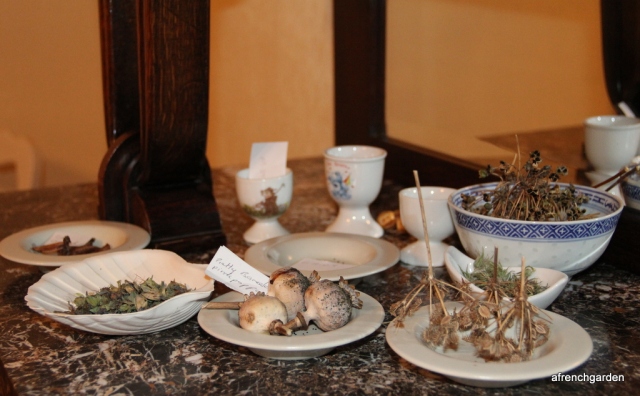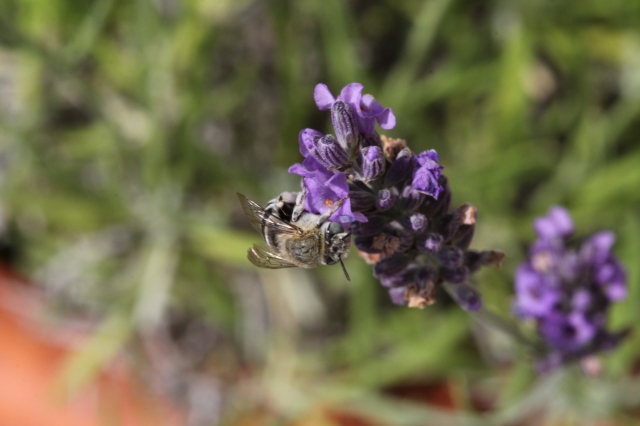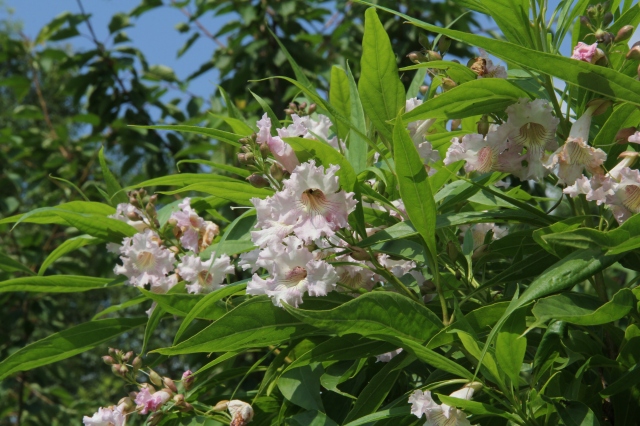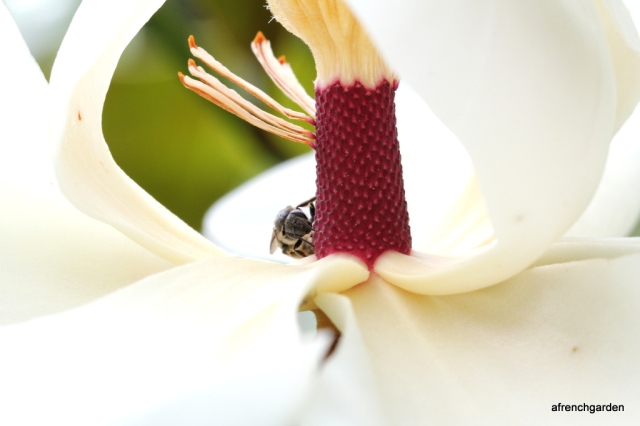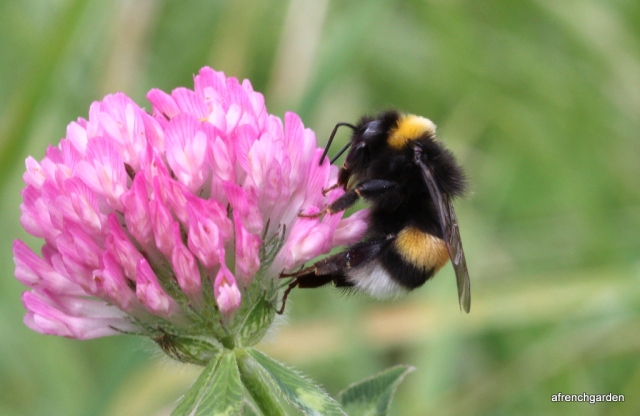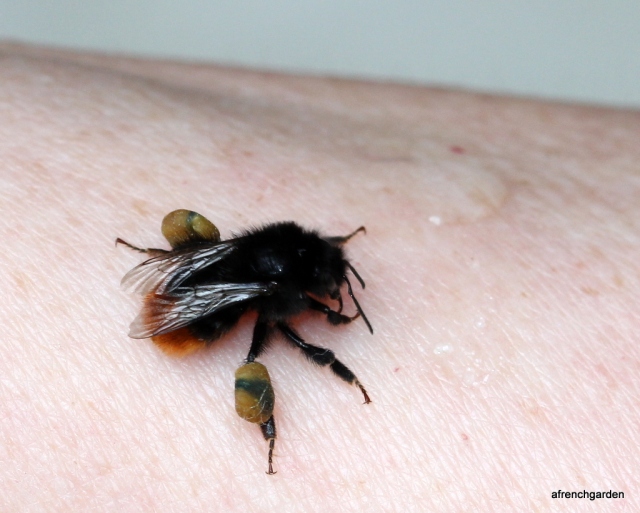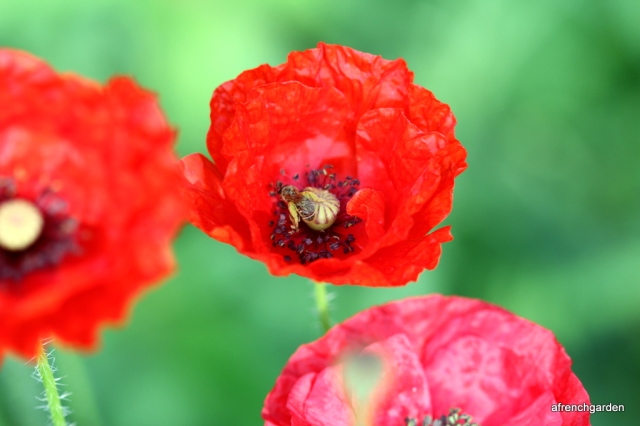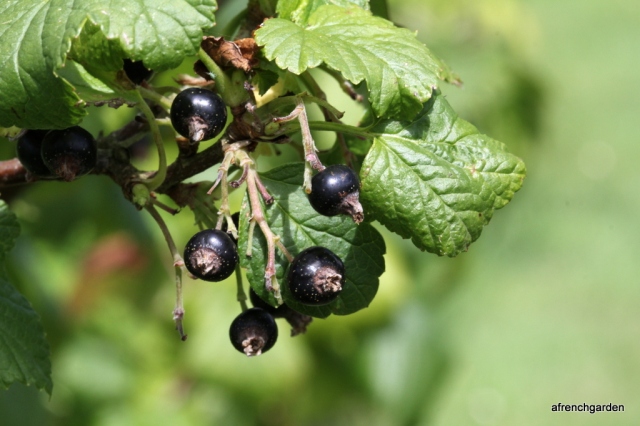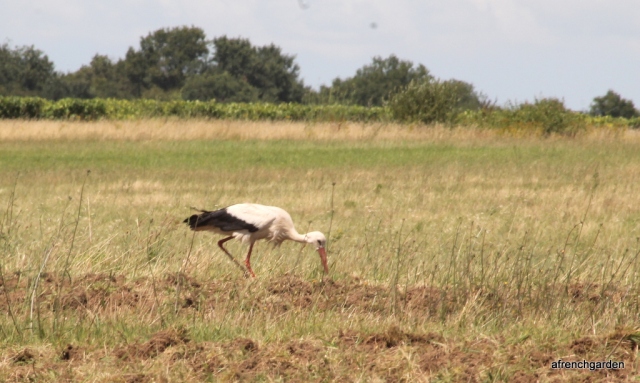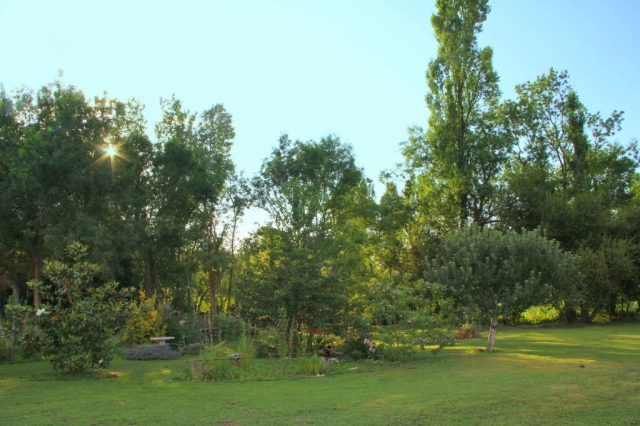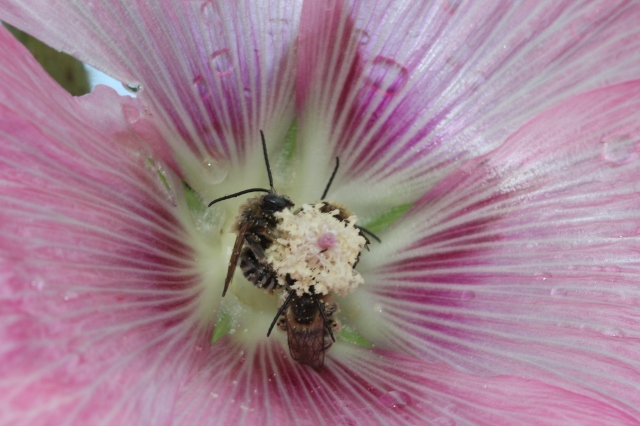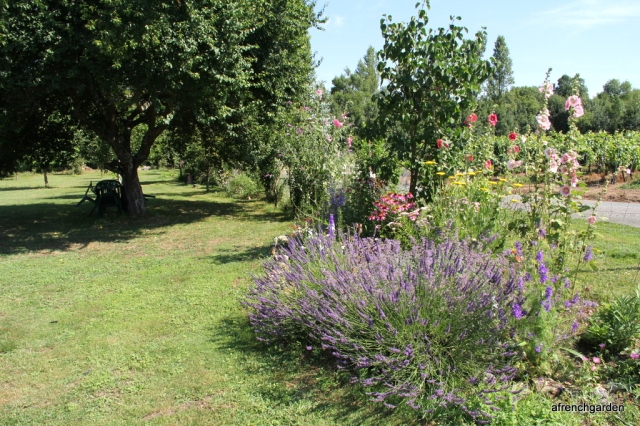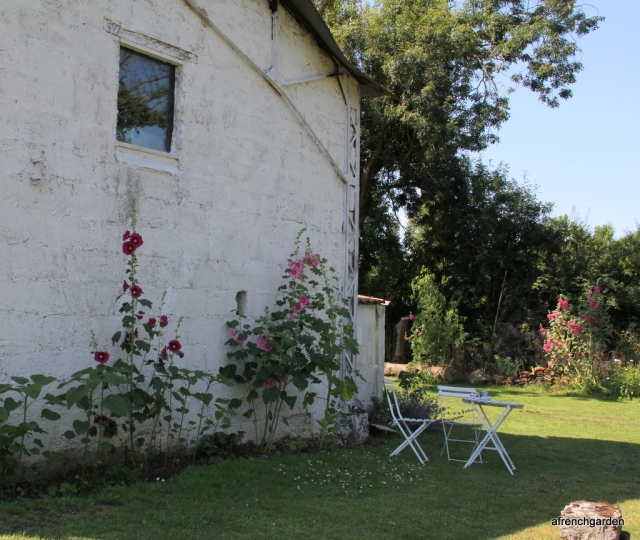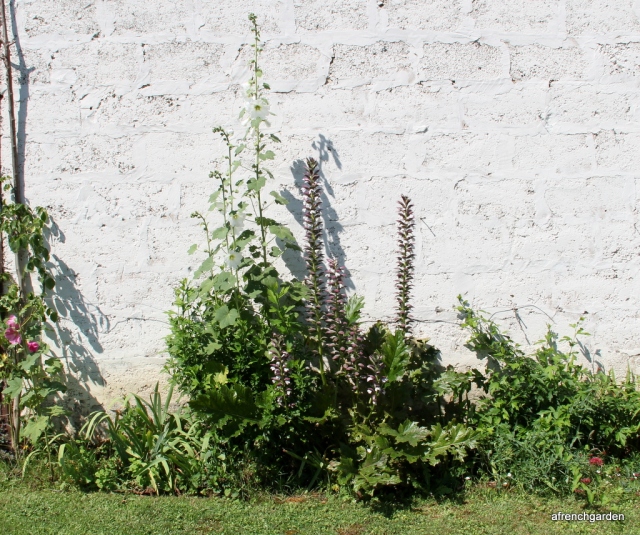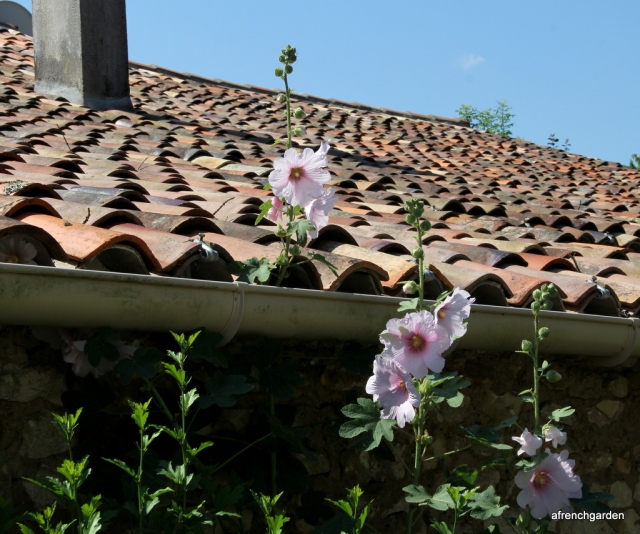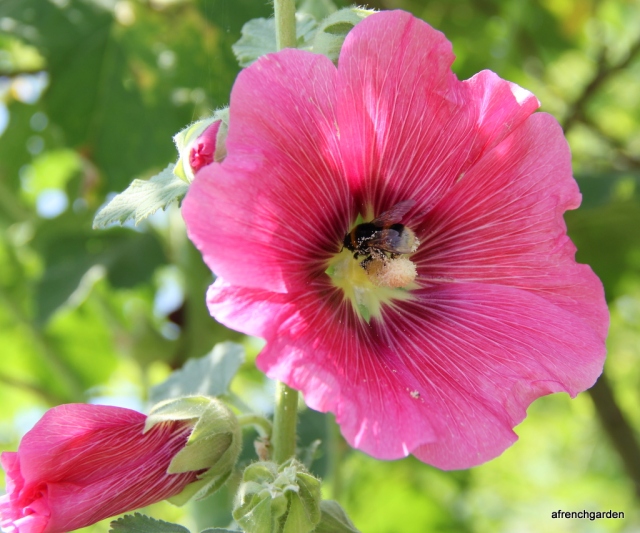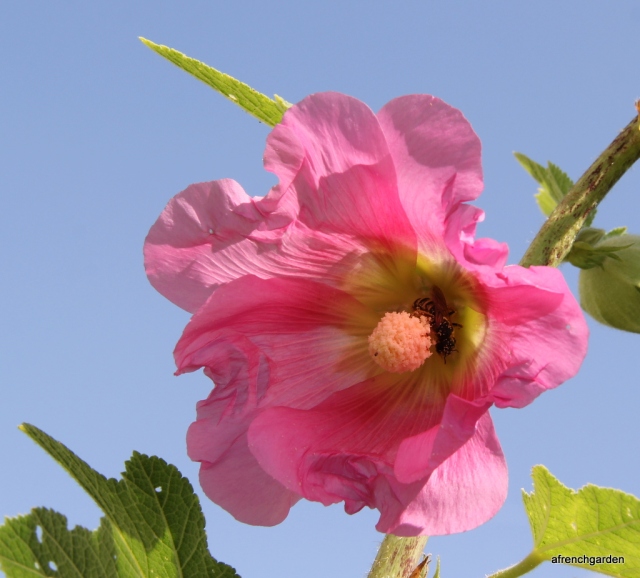After a week away and a couple of thunderstorms inundating the garden all the weeds are happy and flourishing. So much for the mulch of pine needles which covered the area under the ex-Christmas tree cut down last December. I think the mulch would have worked if we had not had such a high rainfall.
The rainfall has meant that the grass needs cutting more frequently than usual. Everywhere is still green but my husband makes sure to leave patches uncut so we can enjoy watching the bees.
The tall yellow flowers that they love are not dandelions, but catsears (Hypochaeris radicata), I think.
They are the favourite of the solitary bee Dasypoda hirtipes, the Abeille à culottes.
She is not the only bee that favours these weeds but I have not yet found out what this one is called.
The Rudbeckia provides another splash of yellow.
These flowers stand two metres tall. They self-seed onto the patch they have grown on the previous year and I have to thin them out to allow them sufficient space to grow. They are perfect for the summer as they take the sun well and are drought tolerant although they have had lots of rain this year.
My Fuschia is two metres tall, too.
This is another perfect summer plant that gives so much for so little care. I now have a cutting of it in the back garden that is doing well. It is called Riccartonii, and I would love to have another hardy Fuschia with a different colour or flowers but this is the only variety I have seen in this area. Is it the only reliable perennial Fuschia?
My Hydrangea must be enjoying the wetter conditions as it is full of flowers. Hot, dry conditions should be avoided for Hydrangeas but mine seems to thrive against a wall in the sun! Two cuttings are also doing well in a sunny spot in the back garden so I think I must have a particularly rugged specimen.
I am always impressed by the rugged plants that thrive no matter what. The poppies seem to have taken advantage of the rain and have extended their season this year.
I have decided you can’t have too many poppies and I plan to sow even more next year.
All through the year I put aside the seeds of the plants I want to increase the following year. It makes sense to increase the flowers that work in the garden (and for me attract the bees) but I had never thought about the economies that could be achieved gathering seeds. I was amazed that The Garden Impressionists had collected over a £100 worth of yellow rattle seed that they will be able to re-sow in their wild flower meadow next year.
But if you do put your seeds to dry, do remember to label them as a lot of little black seeds can look very similar!


